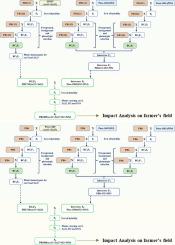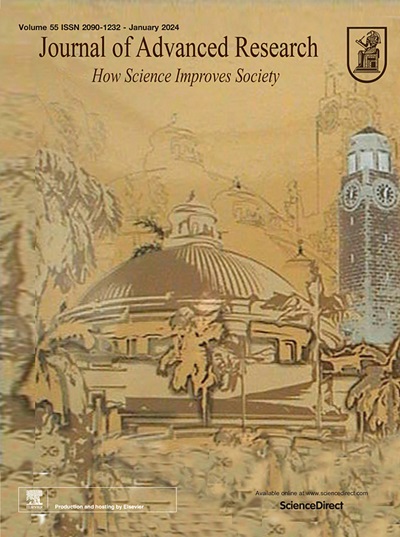Development of dual disease resistant Basmati rice varieties offer significant economic advantage and impetus to sustainable crop production
IF 11.4
1区 综合性期刊
Q1 MULTIDISCIPLINARY SCIENCES
引用次数: 0
Abstract
Introduction
Bacterial blight and blast are the major diseases causing production losses to an extent of 31.52% to 67.79%, respectively. Use of chemical pesticides leads to increased cost of cultivation, degradation of environment and human health while affecting international trade.Objective
The study aimed at developing bacterial blight and blast resistant Basmati rice varieties and to assess their impact in farmers’ field.Methods
A marker assisted selection from intercross of backcross derived lines was implemented to incorporate bacterial blight resistance genes xa13 and Xa21; along with blast resistance genes Pi2 and Pi54. The developed lines were evaluated across multiple environments before release as commercial varieties. The technology was assessed for its impact based on the feedback of farmers’.Results
Marker assisted breeding integrated with stringent phenotypic selection for Basmati quality traits and multi-season trials has led to isolating top performing lines with genome similarity ranging from 94.56% to 96.16% among Pusa Basmati 1121 (PB1121) derivatives and 93.72% to 94.59% among the Pusa Basmati 6 (PB6) derivatives. Reassuring the effectiveness of the target genes in the recurrent parent backgrounds, the selected lines showed no loss of yield when managed without pesticide application. Besides, the lines performed stably across target population of environments (TPEs) covering the entire Basmati growing region. The best performing lines were released for commercial cultivation as varieties, Pusa Basmati 1885 (PB1885) and Pusa Basmati 1886 (PB1886). By growing these varieties, farmers have realised a saving of US$ 95/ha in PB1885 and US$ 134/ha in PB1886, towards managing bacterial blight and blast diseases.Conclusion
The technology developed holds great potential for producing pesticide residue free Basmati rice under environment friendly production conditions. The developed varieties can strengthen trade of Indian Basmati rice in international market while significantly reducing cost of cultivation.

求助全文
约1分钟内获得全文
求助全文
来源期刊

Journal of Advanced Research
Multidisciplinary-Multidisciplinary
CiteScore
21.60
自引率
0.90%
发文量
280
审稿时长
12 weeks
期刊介绍:
Journal of Advanced Research (J. Adv. Res.) is an applied/natural sciences, peer-reviewed journal that focuses on interdisciplinary research. The journal aims to contribute to applied research and knowledge worldwide through the publication of original and high-quality research articles in the fields of Medicine, Pharmaceutical Sciences, Dentistry, Physical Therapy, Veterinary Medicine, and Basic and Biological Sciences.
The following abstracting and indexing services cover the Journal of Advanced Research: PubMed/Medline, Essential Science Indicators, Web of Science, Scopus, PubMed Central, PubMed, Science Citation Index Expanded, Directory of Open Access Journals (DOAJ), and INSPEC.
 求助内容:
求助内容: 应助结果提醒方式:
应助结果提醒方式:


